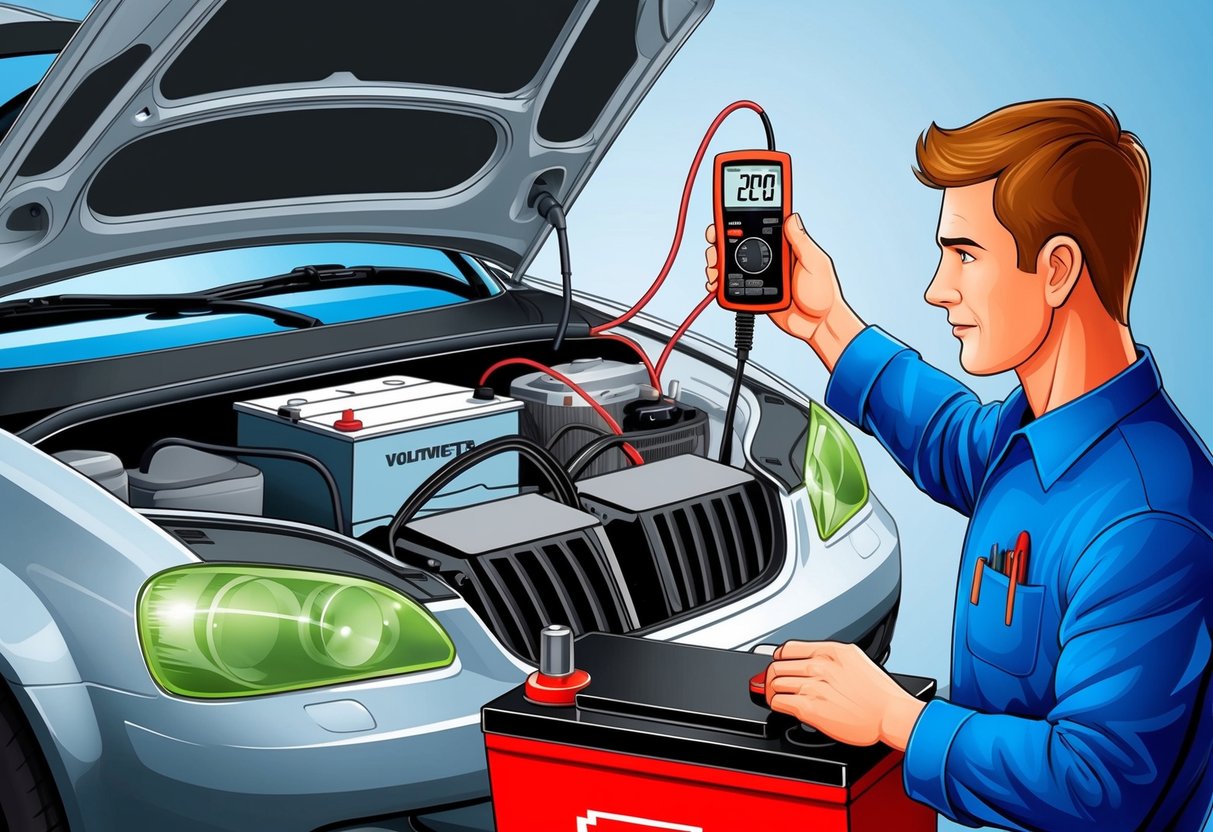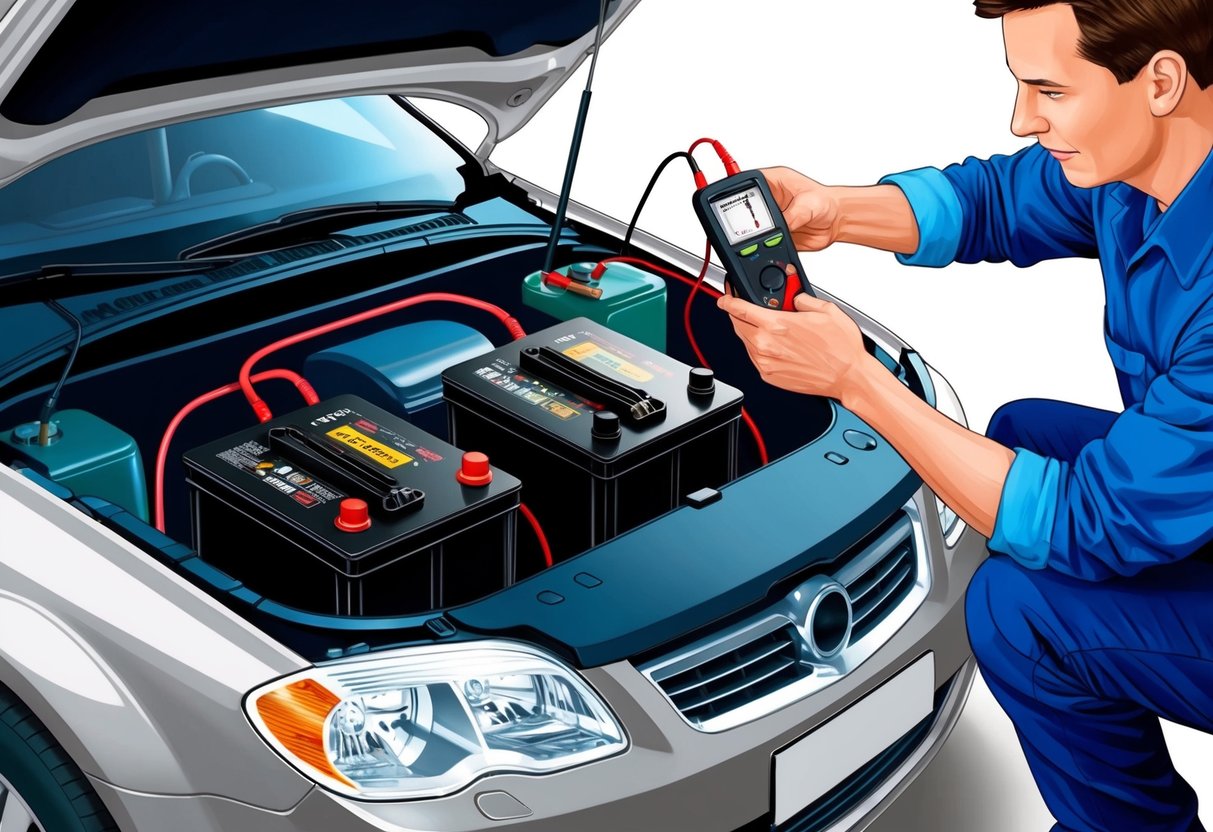
Differences Between Dead and Failing Batteries

A dead car battery and a failing battery can cause different issues, and knowing how to distinguish between them can save time and reduce stress. Recognizing clear signs of battery health can help prevent unexpected breakdowns and support safer vehicle operation.
Symptoms of a Completely Dead Battery
A dead battery typically offers no response when the ignition key is turned. The most obvious sign is that the engine does not crank or even click—there’s usually silence, or sometimes only dim dashboard lights.
Electrical accessories like power windows, lights, and radio won’t function at all. Other telltale symptoms include the sudden appearance of a battery warning icon on the dashboard and a complete lack of power to essential systems, meaning the car will not start under any circumstances.
Sometimes, even trying to jump-start the vehicle may not restore function if the battery is too far gone. For more diagnostic insights, review this guide about how to test and replace a dead car battery.
Signs of a Weak but Not Dead Battery
A weak or failing battery displays less immediate but still concerning issues. Drivers may notice slow or labored engine cranking, especially in cold weather, and headlights or interior lights may appear dim or flicker when the engine is idling.
These flickering or dim lights can be a key indicator, as explained in this rundown of signs your car battery needs to be replaced. Unusual behavior from electronic features—such as an unresponsive remote entry system—can also suggest a weak battery.
Sometimes, the engine will hesitate before starting but will eventually catch, indicating that the battery is not completely dead yet. Several dashboard warning lights may appear intermittently, and devices might reset when the car is started.
These early warning signs present an opportunity to replace the battery before total failure occurs.
Choosing the Right Replacement Battery
Selecting the correct car battery during battery replacement is important for optimal vehicle performance and reliability. Shoppers benefit from knowing what features match their vehicle’s demands and whether to go with manufacturer-original or aftermarket parts.
Factors to Consider
When choosing a car battery, size matters. Refer to the owner’s manual or battery label to confirm the required group size, which ensures a proper fit in the battery tray.
Picking the wrong size can lead to connection issues or battery movement. Cold Cranking Amps (CCA) is another important factor, especially in colder regions.
CCA measures the battery’s ability to start an engine in low temperatures. It is best to choose a battery with a CCA rating that meets or exceeds the manufacturer’s recommendation.
Check the reserve capacity as well. This value indicates how long the battery can supply power with the engine off.
More reserve capacity provides added insurance in case of alternator failure or accessory use. Also, confirm the battery chemistry and type suit the vehicle.
Modern vehicles often require AGM (Absorbent Glass Mat) or EFB (Enhanced Flooded Battery) types instead of traditional flooded lead-acid batteries. Review these guidelines for choosing a car battery for more detailed steps and considerations.
OEM vs. Aftermarket Options
Original Equipment Manufacturer (OEM) batteries are designed to meet the specific requirements set by the vehicle’s maker. These batteries usually guarantee a precise fit, optimal performance, and compatibility with electronic systems.
They are typically more expensive but provide peace of mind regarding quality and warranty. Aftermarket car batteries, while often less costly, come from third-party manufacturers.
Quality varies, so it is important to choose reputable brands and match all specifications—size, CCA, reserve capacity, and terminal configuration—to the vehicle needs. Some aftermarket options may offer higher performance or longer warranty periods.
Before making a purchase, compare warranty coverage, available customer support, and the reputation of both OEM and aftermarket options. This helps ensure the battery replacement enhances vehicle longevity and reliability.
DIY Battery Replacement Tips
Proper car battery replacement ensures your vehicle starts reliably and avoids electrical issues. Careful handling and following the correct steps can keep the process safe and straightforward.
Safety Precautions
Before starting any DIY car battery replacement, taking safety measures is essential. Always turn off the engine and remove the keys from the ignition.
Wear protective gloves and safety glasses to prevent acid burns and shield your eyes from sparks. Work in a well-ventilated area to avoid the buildup of dangerous gases.
Disconnect the negative terminal (marked with a minus sign or “-”) first to minimize the risk of a short circuit, then remove the positive terminal. Never allow metal tools to bridge both battery terminals—this could cause a serious short.
Inspect for any corrosion around the battery terminals. If corrosion is present, it should be cleaned with a paste made from baking soda and water before battery removal.
Keep flammable materials and open flames away from the battery at all times. Make sure to dispose of the old car battery according to local recycling regulations.
Step-by-Step Replacement Guide
-
Gather Tools: You’ll need a wrench, gloves, safety glasses, and a battery terminal cleaner or brush.
-
Disconnect Cables: Start by removing the negative cable first, then the positive cable. Doing so reduces the risk of electrical shock or short circuit.
-
Remove the Old Battery: Loosen and remove the hold-down clamp or bracket securing the car battery in place. Carefully lift out the battery, keeping it upright to prevent leaking acid.
-
Clean Battery Tray and Terminals: Use a brush to remove any debris or corrosion from the tray and cable connectors.
-
Install the New Battery: Position the new battery securely into the tray. Reattach the hold-down clamp and connect the positive cable first, then the negative cable.
This proper sequence helps reduce safety risks. 6. Check Connections: Ensure cables are snug and do not move.
Tighten as needed, but avoid over-tightening, which could damage terminals. Test the car by starting it.
For a visual guide and more detailed explanations, see this complete battery replacement tutorial.